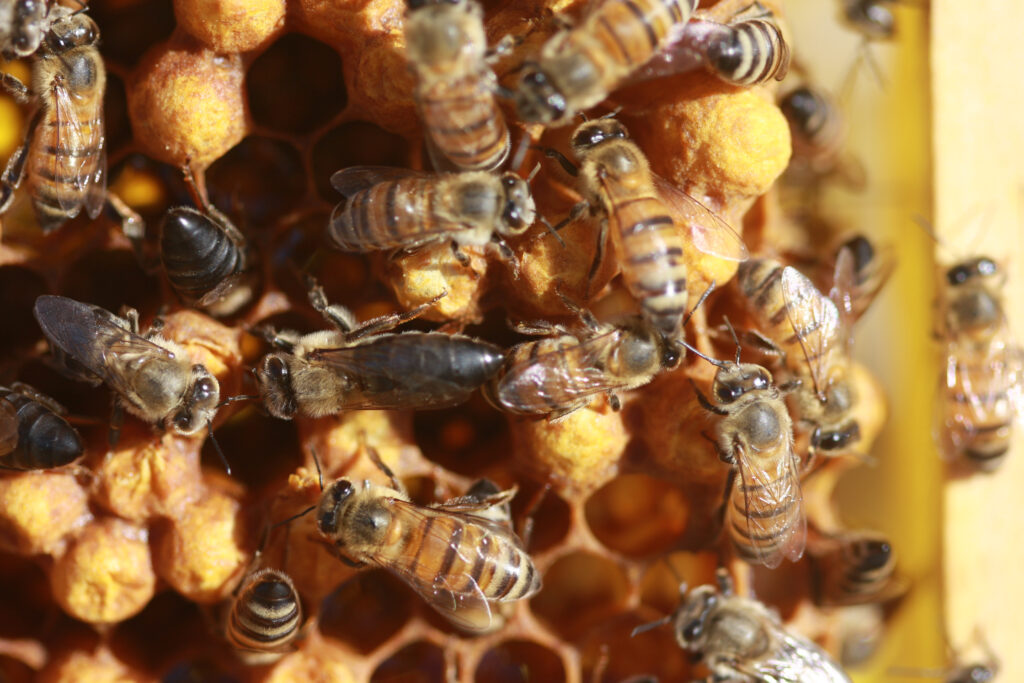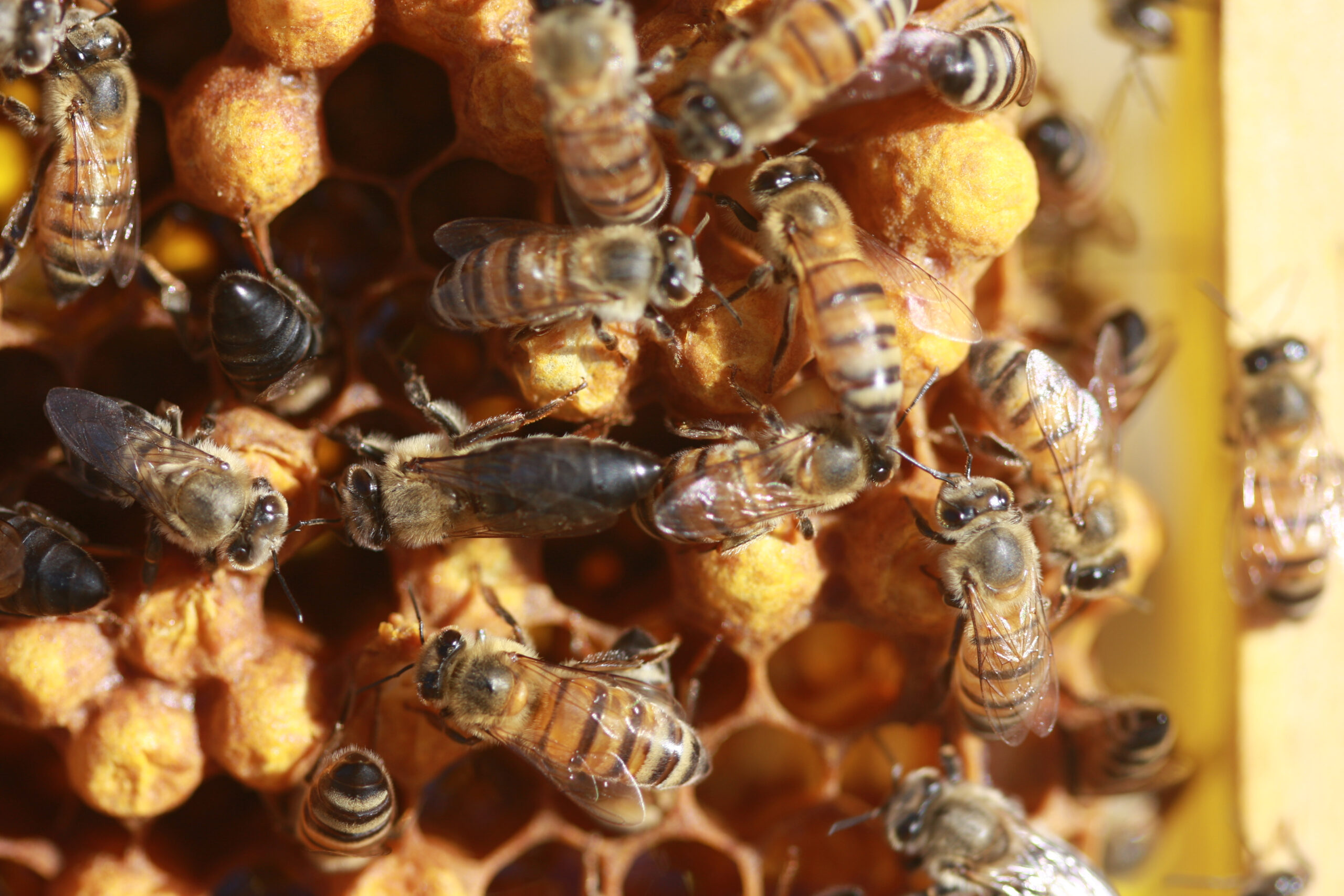One of the most enduring and confusing mysteries of life is sex. Why is everyone so obsessed with it? Why do we do it in the first place?

The evolutionary imperative to pass on one’s genes is one thing, but even that doesn’t fully explain it. Even if you don’t consider all the non-reproductive sex going on in various species, sex is just not really that great of a method for passing on your genes. Think about it: a sexually produced individual gets half their genes from each parent. An asexually produced individual gets all of their genes from one parent. From the point of view of the parent, asexual reproduction would seem to be the best way to go. An individual shouldn’t settle for only passing on half their genes to each offspring when they could pass on all of them.
Why, then, does the vast majority of multicellular life on earth reproduce sexually, especially since asexual reproduction evolved first and would appear to be more efficient? One explanation is genetic diversity. Sex is basically a way for species to develop new combinations of genes that allow advantageous genes to propagate while filtering out potentially disadvantageous ones. Such genetic diversity makes a population more robust to parasites and diseases and other environmental factors that might otherwise wipe them out. And this benefit is certainly great enough to counteract the individual cost of diluting your genome via sex. Sex is nearly ubiquitous in multicellular life forms, and once a species has evolved sex, it very rarely goes back.
So when we come across a population that does go back, it provides a unique opportunity to investigate how and why sex evolved in the first place. One such population has captivated BEE lab researchers for years – a mysterious population of honey bees found only in the Western Cape of South Africa. This unique subspecies is known as Apis mellifera capensis or the Cape honey bee.
What’s so special about Cape bees?
All honey bees exhibit both sexual and asexual reproduction. Due to their haplo-diploid sex determination system, females are produced sexually from fertilised, diploid eggs. They receive half of their chromosomes from each parent. Males arise from unfertilised, haploid eggs. They are produced asexually and receive their entire genome from their mothers – they do not have fathers. Any female honey bee is technically capable of producing male eggs, even workers (who are incapable of mating). The ability of female honey bees to lay haploid eggs that develop into fully functional males is known as arrhenotokous parthenogenesis, and all male honey bees are produced this way. However, since only queens can mate, they are the only individuals that can produce female offspring.
The Cape honey bee does things differently, as this subspecies has evolved the ability to reproduce via thelytokous parthenogenesis. Sex cells are produced via meiosis, which usually results in haploid daughter cells (sperm or eggs) that can then fuse with another meiotically produced cell from another individual (fertilisation) to produce viable offspring (sex!). In the Cape honey bee however, the meiotic products fuse together as if one was a sperm. The eggs they produce effectively fertilise themselves, and develop into fully functional females that are genetically identical to their mother. Female Cape honey bees can clone themselves (Goudie and Oldroyd 2014).
Attack of the clones!
This neat little trick means that the social dynamics of a Cape honey bee colony are completely different to what we are typically accustomed to seeing in honey bees. Since the workers can clone themselves, there is fierce competition between workers and queens over queen production. If a worker can lay an egg that develops into a queen, she is genetically reincarnated as a queen herself, a massive payoff in evolutionary fitness. Workers actively seek out these opportunities, leading to social conflict that can sometimes be extreme enough to kill the colony (Goudie and Oldroyd 2014; Beekman et al. 2008).
In one remarkable case in the early 1990s, a single Cape honey bee worker was so good at exploiting these opportunities that she gave rise to billions of clonal offspring, all of whom had the same ability (Oldroyd et al. 2011). They invaded other colonies and laid eggs which were reared at the host colony’s expense while not contributing to colony life in any way. The host colonies eventually collapsed as they could not sustain the large number of clones being produced; the clones simply moved on to other colonies to continue the terror. Tens of thousands of colonies died, and the South African honey bee industry was devastated (Allsopp 1992).

The above example shows just how beneficial asexual reproduction can be to an individual, while also underscoring just how detrimental it could be to a population under particular circumstances. And even in the Cape honey bee, the majority of females are still produced sexually, by queens. There are two competing evolutionary forces at work, and if we are to ever understand them, we need to know the mechanism by which Cape bees can switch between sexual and asexual reproduction. Labs around the world have been investigating this for over 30 years.
What causes thelytoky in the Cape bee?
Researchers around the world have fiercely debated the genetic underpinnings of thelytoky in Cape bees for decades. But now, new research from the BEE lab has confirmed that in the Cape honey bee, thelytoky is caused by a single gene (Yagound et al. 2020). Not only that: we have also found out which chromosome the gene is located on.
We’ve known for a while that thelytoky is likely controlled by a single recessive locus, th (Chapman et al. 2015). Only individuals that receive a th allele from both parents (or in clonal offspring, two from the same parent) are capable of thelytoky. Yagound et al (2020) performed backcross experiments by artificially inseminating thelytokously produced Cape honey bee queens with semen from males of the African honey bee (A. m. scutellata), South Africa’s other (non-thelytokous) honey bee. The hybrid queens produced from this insemination were then inseminated with semen from Cape honey bee males to produce colonies where the worker population were half th/th (thelytokous) and half Ar/th (arrhenotokous). Female offspring produced by the backcross workers, which could only be th/th, were then collected for whole-genome sequencing, along with the parents and grandparents.
Genome-sequencing showed that all th/th offspring workers carried markers associated with the gene GB45239, located on chromosome 11. No other part of the genome was associated with the thelytokous phenotype. Yagound et al also sequenced the genomes of A. mellifera from around the world – but only Cape honey bees were found to have the genetic markers associated with thelytoky.
This discovery is a breakthrough, as the molecular mechanisms that determine whether an individual reproduces asexually or sexually had never previously been described. In the Cape honey bee, a single mutation on a single gene (GB45239) causes the switch, which as described above, can have huge implications for the behaviour and ecology of a species.
So why is there so much sex going on?
We’re still working that out. But knowing that species can switch from sex to asex based on a single gene is a big step in understanding how sex may come about – not just in bees but in all life on earth. We all know how the need (or not) to have sex can affect behaviour, and societies as a whole. Studying the unique populations that are both sexual and asexual is the only way to find out why this happens in the first place.
Further Reading:
Allsopp, M. H. 1992. “The Capensis Calamity.” S Afr Bee J 64: 52–55.
Beekman, M., M. H. Allsopp, T. C. Wossler, and B. P. Oldroyd. 2008. “Factors Affecting the Dynamics of the Honeybee (Apis Mellifera) Hybrid Zone of South Africa.” Heredity 100 (1): 13–18.
Chapman, N. C., M. Beekman, M. H. Allsopp, T. E. Rinderer, J. Lim, P. R. Oxley, and B. P. Oldroyd. 2015. “Inheritance of Thelytoky in the Honey Bee Apis Mellifera Capensis.” Heredity 114 (6): 584–92.
Goudie, Frances, and Benjamin P. Oldroyd. 2014. “Thelytoky in the Honey Bee.” Apidologie 45 (3): 306–26.
Oldroyd, Benjamin P., Michael H. Allsopp, Julianne Lim, and Madeleine Beekman. 2011. “A Thelytokous Lineage of Socially Parasitic Honey Bees Has Retained Heterozygosity despite at Least 10 Years of Inbreeding.” Evolution 65 (3): 860–68.
Yagound, Boris, Kathleen A. Dogantzis, Amro Zayed, Julianne Lim, Paul Broekhuyse, Emily J. Remnant, Madeleine Beekman, et al. 2020. “A Single Gene Causes Thelytokous Parthenogenesis, the Defining Feature of the Cape Honeybee Apis Mellifera Capensis.” Current Biology: CB, May. https://doi.org/10.1016/j.cub.2020.04.033
